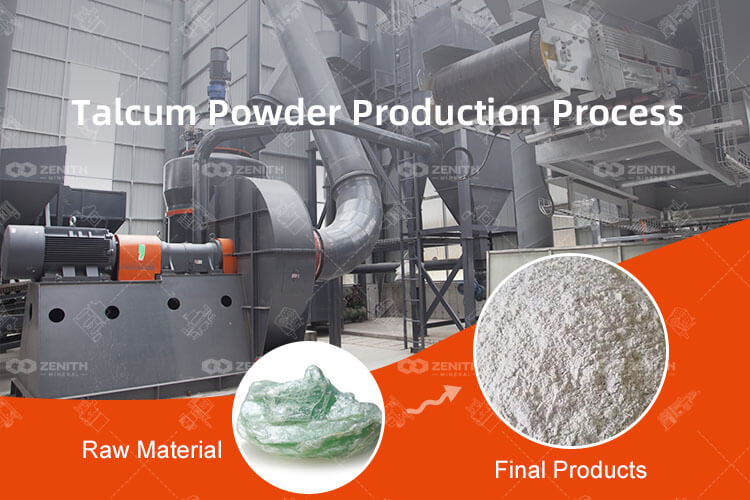Abstract:The production process of talcum powder involves several steps, including mining, crushing, drying, milling, and packaging.
Talcum powder, also known as talc powder or baby powder, is a cosmetic product made from talc, a mineral composed mainly of magnesium, silicon, and oxygen. It is widely used for its absorbent and lubricating properties and has various applications in personal care and hygiene.
The production process of talcum powder involves several steps, including mining, crushing, drying, milling, and packaging. Here is a general overview of the process:

1. Mining: Talc deposits are typically found in underground or open-pit mines. The ore containing talc is extracted using various mining methods, such as blasting, drilling, or using heavy machinery.
2. Crushing: The extracted talc ore is crushed into smaller pieces to facilitate further processing. Crushing can be done using jaw crushers, gyratory crushers, or cone crushers.
3. Drying: After crushing, the talc ore is typically dried to remove moisture. This step is crucial to prevent clumping and improve the flow characteristics of the powder. Various drying techniques can be employed, including rotary dryers, fluidized bed dryers, or flash dryers.
4. Milling: The dried talc ore is then milled into a fine powder. Milling involves grinding the talc particles to achieve the desired particle size distribution. Different types of grinding mills, such as ball mills, Raymond mills, or ultrafine vertical mills , can be used for this purpose.
5. Classification: The milled talc powder is classified or separated into different particle sizes using air classifiers or sieving techniques. This step ensures that the final product has a consistent particle size distribution.
6. Surface Treatment (Optional): In some cases, talcum powder may undergo surface treatment to improve its properties or enhance its performance. Surface treatments can include the addition of coatings, modifiers, or other additives to modify the powder's characteristics.
7. Packaging: The final talcum powder is packaged into containers, such as bags, boxes, or bottles, for distribution and sale. Packaging is typically done in a controlled environment to maintain the quality and prevent contamination of the powder.
It is important to note that the specific production process may vary depending on the manufacturer and the intended application of the talcum powder. Quality control measures, such as testing for purity, particle size distribution, and consistency, are typically implemented throughout the production process to ensure the final product meets the required standards.
leave your message here, we'll send you
an Email immediately.
